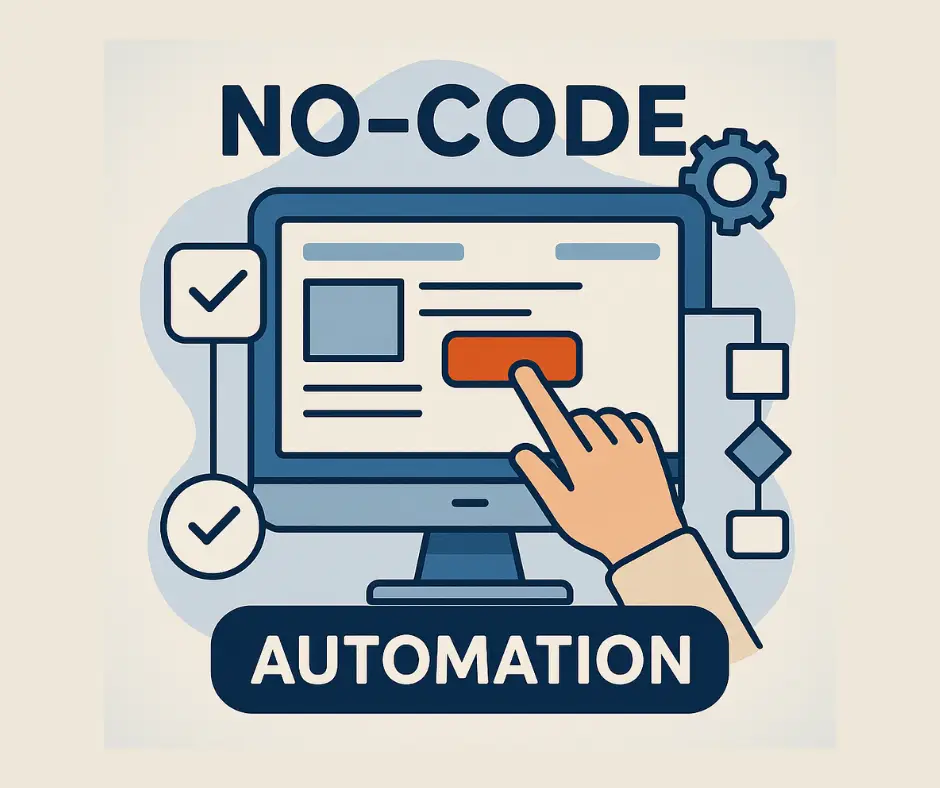
No-code test automation is quietly reshaping the QA game. It’s not about replacing testers—it’s about removing roadblocks, especially the “you need to know how to code” one. It enables QA testers to create and run automated tests using visual interfaces. You get speed, accuracy, and less bottlenecking—without needing a developer to hold your hand. So what is No-code test automation, and what are its top benefits? Let’s dive in:
What Is No-Code Test Automation?
No code test automation is exactly what it sounds like—test automation without writing code. Instead of scripting in Java or Python, QA testers can build, run, and maintain automated tests using drag-and-drop tools, visual workflows, or simple rule builders. Think of it as test automation made user-friendly.
This approach was born from the need to make testing faster, more collaborative, and more accessible. Not every tester is a programmer, and with traditional methods, a lack of coding skills often slows things down—which, by the way, is a big reason why 64% of test automation efforts fall short. No code platforms fix that.
AI powered codeless test automation platforms can adapt to changes in UI, auto-heal broken tests, and simplify complex test cases. The result? Tests that are easier to build, maintain, and scale—whether you’re testing a web app, mobile product, or both.
In short: no code test automation lets QA teams do more, with less.
Traditional, Low-Code, and No-Code Test Automation: Key Differences

Let’s quickly look at how no-code stacks up against the old-school and low-code options:
| Feature | Traditional Automation | Low-Code Automation | No-Code Automation |
| Coding Required | Yes (heavy scripting) | Some scripting or logic building | None |
| Ease of Use | Complex setup and maintenance | Easier than traditional, still technical | Very easy—visual, intuitive |
| Speed of Test Creation | Slow | Moderate | Fast |
| Best For | Developer-heavy QA teams | Teams with some tech-savvy testers | Manual testers, or mixed-skill teams |
| Test Maintenance | High effort | Moderate effort | Low effort |
| Scalability | High, but costly and slow | High with effort | High and quick |
Top Benefits of No Code Test Automation for QA Teams
Let’s be real: testing has always been the part of the process where time quietly vanishes. No-code test automation changes that in a big way—and not just for engineers. It opens doors, saves hours, and seriously reduces release headaches. Here’s how:
1. Test Creation Gets Really Fast
Manual scripting can take hours. With no-code tools? It’s mostly click, drag, and drop. You can create test cases visually—often using screen recordings or predefined steps—without touching a line of code.
This speed means tests are written as fast as features are built. No more QA playing catch-up. No-code/low-code platforms have actually been shown to cut software development time by up to 90%. So yes, it’s not just fast, it’s really fast.
2. Non-Technical Team Members Can Contribute
No-code test automation breaks the “engineers only” barrier. QA testers, business analysts, and even product managers can hop in and write or edit tests.
That’s a big deal—because when testing is no longer bottlenecked by development time, you get more eyes on the product earlier. And you spot problems sooner.
It’s no surprise that 84% of enterprises are now using no-code/low-code solutions—mostly to reduce the load on devs and give other teams a seat at the table.
3. Test Maintenance is No Longer a Hassle
Ever had 20 tests break because someone moved a button? That’s old news. Our no-code test automation platform uses AI to self-heal—automatically updating locators and flows when the UI shifts.
Less brittle testing = happier QA engineers. And fewer fire drills right before release. Especially helpful considering developers already spend 33% of their time managing technical debt.
4. Faster, More Confident Releases
When QA isn’t slowed down by complex tooling, they can run more tests more often. This means bugs get caught earlier—before they morph into user-facing disasters.
CI/CD integrations make it easy to bake testing into every commit, too. And since no-code platforms can help teams build apps 10x faster using 70% fewer resources, you’re not just releasing faster—you’re releasing smarter.
5. Real Cost Savings, Especially at Scale
Engineers spending less time writing and maintaining tests = less money down the QA drain. Plus, test coverage goes up, and the risk of costly post-release bugs goes down.
No-code test automation doesn’t just save time—it protects the bottom line. Some teams even saw a $19.8 million boost in yearly revenue, just by speeding up feature development with low-code tools.
6. It Grows with Your Team and Product

Start small. Build big. Whether you’ve got a 2-person QA squad or a 30-person distributed team, AI-powered codeless solutions can scale with your workflows. Some no-code test automation platforms now support cross-browser, mobile, and even API testing—so you’re not juggling a dozen tools just to get coverage.
You don’t need to rebuild your whole QA stack—just plug it in where it fits. With low-code platforms accelerating new app builds by 62%, growth doesn’t have to mean growing pains.
7. Learning Curve? Practically a Slope
Traditional automation can feel like learning a new language. No-code testing automation? It’s more like learning a new app. If you’ve ever used a spreadsheet or built a slide deck, you’re halfway there.
New hires ramp up in days, not weeks. And you don’t need a Selenium wizard to unblock your testing pipeline.
Speedy onboarding = fewer bottlenecks = smoother shipping.
8. Better Visibility, Better Decisions
Codeless test automation platforms often come with built-in dashboards, real-time metrics, and smart alerts. No need to dig through logs or decode error messages—everything’s visual, actionable, and right there.
You’ll know what passed, what failed, and what needs attention. Even non-technical team members or stakeholders can peek in and understand what’s going on. That means faster decisions, fewer blind spots, and way more confidence in every release.
Final Words
No-code test automation is all about working smarter. ZeuZ makes it easier for QA teams to build, run, and maintain tests without code or chaos. So, if you’re chasing daily releases or just tired of brittle tests breaking every week, try ZeuZ today. The sooner you start, the sooner QA stops feeling like a chore.
FAQ on AI-Powered Codeless Test Automation
- How Codeless Test Automation Works?
With ZeuZ, no-code test automation happens through a visual interface (like screen recorders, flowcharts, or drag-and-drop steps) and AI to generate and run tests—no coding required.
- Can I do automation testing without coding?
Absolutely. We built ZeuZ for that exact purpose. Anyone on your team can build and run automation tests without having to write a single line of code.
- Which tool is best for automation testing?
Out of all of the no code testing automation platforms, ZeuZ is the best overall. This AI powered all in one platform supports web, mobile, API, and desktop testing.
- What is the difference between low-code and no-code test automation?
Low-code requires minimal coding—usually for complex logic. No-code is entirely visual, built for non-technical users.
- What are the key advantages of AI-powered codeless test automation?
Smarter test creation, auto-healing when UI changes, faster cycles, better scalability, and way less maintenance.
